Magic’s twenty-seventh year was an odd one. The game is performing well by any sales metric or measurement of social capital, and Arena finally feels like Wizards has landed on a digital platform that will last longer than two years; and yet I feel like there’s a headlong rush towards unsustainability. This may be year-end megrims creeping up on me, but it’s hard to look at the roster of banned cards and the launch of curated direct-to-players boxed sets and the myriad of sets planned for 2020 and not feel overwhelmed.
2019 was the first year where I felt like I wasn’t able to dedicate myself to every set. Again, that may be a function of getting older—were I twenty-three instead of thirty-three, I can tell you I would have drafted Modern Horizons four times a week instead of four times a month. But the beauty of Magic is that I’m still engaged, even when overwhelmed—in 2019, I built three Pioneer decks, slung Commanders at old friends, and helped two new friends learn the game. To go from “okay, so you have five colors of ‘energy,’ which is called ‘mana’” to losing to them at a Two-Headed Giant Prerelease dilutes any feelings of doom or unease, and emphasizes what the game’s all about.
In that spirit, I thought I’d revisit the highlights—and some of the low points—of the game in the last twelve months.
Best Set
A quick recap: 2019 brought Ravnica Allegiance, War of the Spark, Modern Horizons, Core Set 2020, and Throne of Eldraine. That’s a pretty solid roster, honestly—even if Throne hit the gas too hard and Modern Horizons ruffled some feathers—but one set stands out to me as worthy of praise.
When Wizards first announced the theme of War of the Spark, I wasn’t on board—as someone who adores Ravnica and is ambivalent about Planeswalkers, I was dreading a superpowered smackdown that devastated the plane.
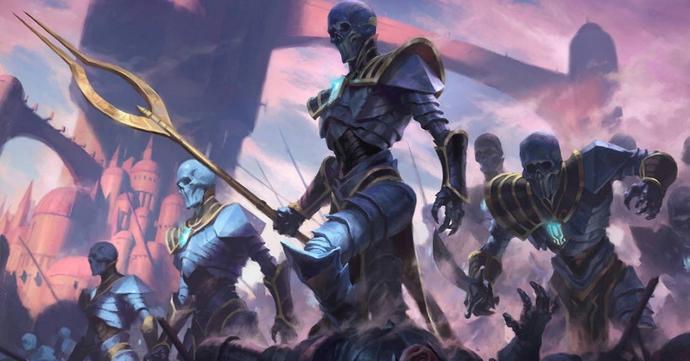
Instead, War threaded the needle. Limited was absurd, with everyone running multiple Planeswalkers and over-the-top bombs (God-Eternal Kefnet stands out here), proving that an arms race can be great fun if everyone has equal access to ammunition. Removal was souped-up (Ob Nixilis’s Cruelty, Jaya’s Greeting, Ral’s Outburst), Planeswalkers swung the game from turn to turn, and Amass’s inevitability was great flavor for a war-torn plane.
Even anodyne cards like Aven Eternal became potent early picks in the context of the set. I wouldn’t want every set to be War of the Spark, but it’s one I anticipate revisiting in years to come around the kitchen table.
Worst Set
Not a controversial pick here: Core Set 2020 brought a stellar influx of cards into the Standard environment, but it brought me back to the doldrums of the Core Set.
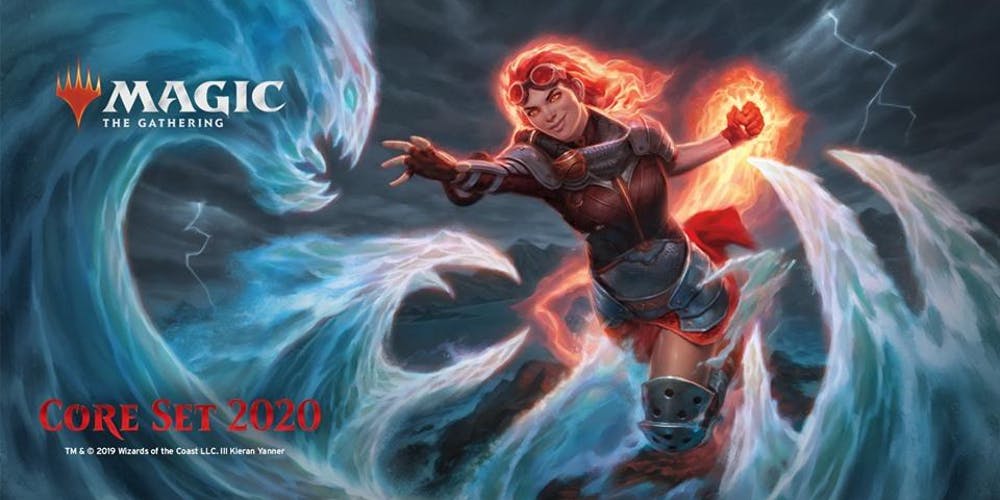
The Cavaliers were defanged Titans that were still Limited bombs, which is disappointing coming from both angles. The Elemental deck was the easy best deck that was boring to pilot. Chandra was supposed to be the star of the set, but her subtheme was executed poorly—a bad omen for Chandra’s story arc to come.
While I appreciate the role that Core Sets play in Magic, they’re not exciting to open. That said, it seems like a good year where this was my worst set.
Worst-Designed Card of 2019
No, it’s not Oko—as we’ve discussed, Oko’s design is fine, it’s just his numbers that are warped. He’s poorly developed, but the design is appealing. Nor is it Once Upon a Time—completely busted and consistently boring, certainly, but it tells an elegant little story. For my money, the worst-designed card from 2019 was Field of the Dead.
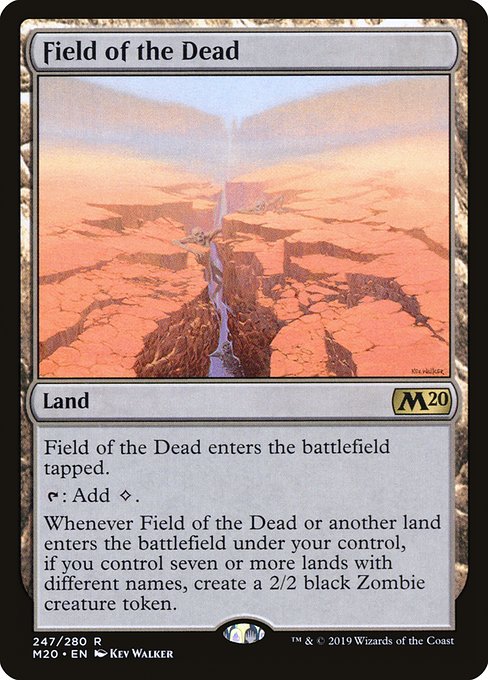
It’s underwhelming on first glance—seven different lands is a heavy commitment—and overpowered in play; the perfect confluence of boring and overdominant. The worst parts of Valakut plus the worst parts of Gideon, Ally of Zendikar, Field is boring to play and boring to play against. The fact that it warped the metagames of Standard and Pioneer added insult to injury.
Best-Designed Card of 2019
The story told by Alpine Guide is my favorite of the year. Treating permanents on the battlefield as repositories of memory and knowledge is an incredible detail, and Alpine Guide leads you to territory, the knowledge of which is lost forever once he dies.

It’s beautiful, and it’s a great way to give Red temporary ramp. This unassuming, standalone card is my pick for the quietly best-designed card of the year.
Most Exciting Vampire
While technically not a Vampire himself, Sorin, Imperious Bloodlord tied a deck together in Standard and created an archetype in Pioneer and Modern. Sorin is either spitting out big vampires in Standard, turning Bloodghasts into removal in Modern, or buffing up Knight of the Ebon Legion in Pioneer. He’s a roleplayer, and one whose role will only grow as more Vampires are printed.
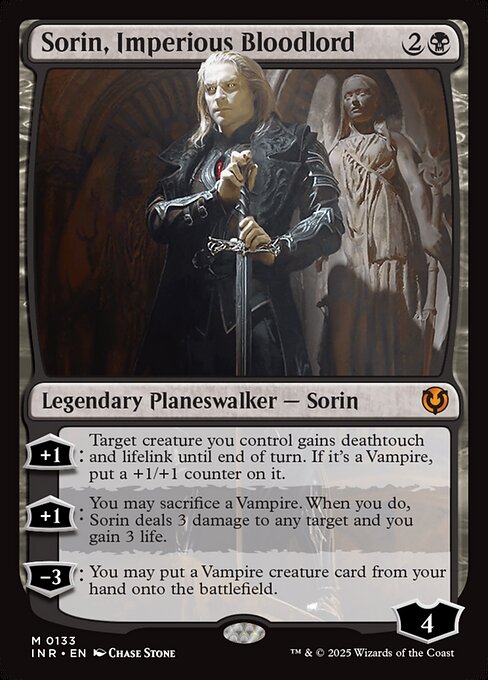
The cohort of Sorin, Liliana, Untouched by Death; Sarkhan, Fireblood; Garruk, Cursed Huntsman; and Chandra, Acolyte of Flame establish fertile territory for Planeswalkers—niche, but potent in the right shell. He’s exciting not just because he opened up another aggressive archetype, but because of the trend he solidified for Planeswalkers.
Least Exciting Vampire
I was initially high on Anje Falkenrath. Even without a Madness theme, a hasty Looting engine is a great card; but after playing her, my ardor has cooled.
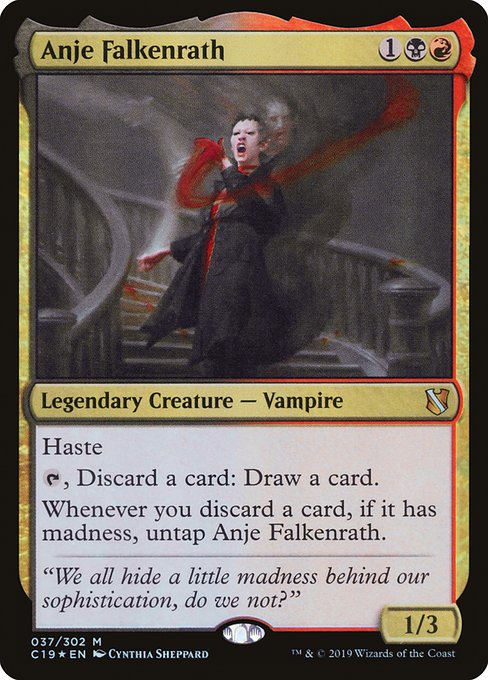
Anje’s a Bonded Fetch who dictates your deck’s build (i.e., “run cards with Madness and ones that benefit you when discarded”) and does nothing independently exciting. She’s welcome at my party, but I’m not going to invite her in alone.
Best Reprint
We have a tie between Leyline of the Void and Grafdigger’s Cage!
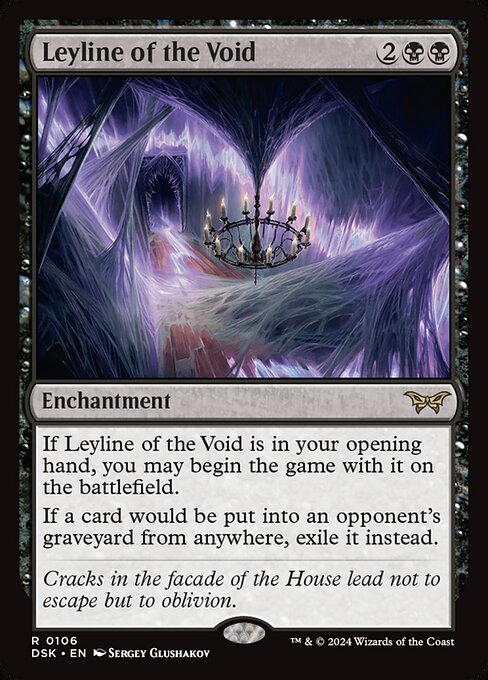
The graveyard has an outsized impact upon the game of Magic, which the regency of Hogaak proved once again. As long as Wizards is willing to design graveyard-fueled cards (which Escape suggests will continue in the future), we’ll need tools to shut the graveyard down. Nothing does that better than this dyad, which slams the door on graveyard decks on turn zero or turn one, and does so with minimal investment.
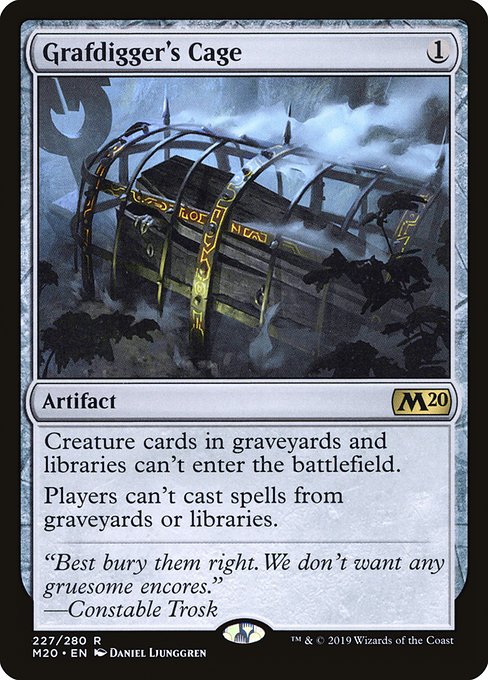
Leylines even received a power boost in Pioneer through their interaction with Nykthos, resulting in Leyline of Abundance’s banning (a far cry from the expectations placed on the card when it was first released). Leyline and Cage do it fast, cheap, and permanently; and for that, they’re always welcome tools, especially as scarcity drives the price up.
Worst Reprint
I understand the need for a common mana fixer, but the first time I drew an opening hand with a Gateway Plaza and one other land, “good design” lost out to “bad feeling.” Then it came back in two more concurrent sets.
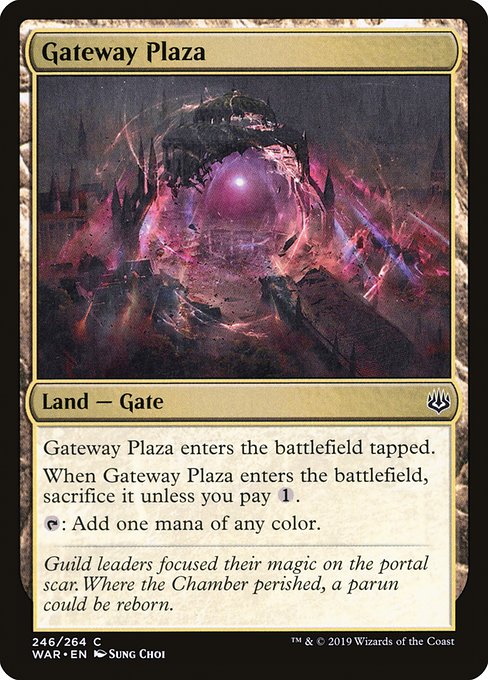
Nothing wrong with Gateway Plaza in a vacuum, but every time I picked it to make sure I could cast Crackling Drake, I lost a bit more enthusiasm. At least it had new art—but that’s the best thing you can say for it.
Most Dangerous Card
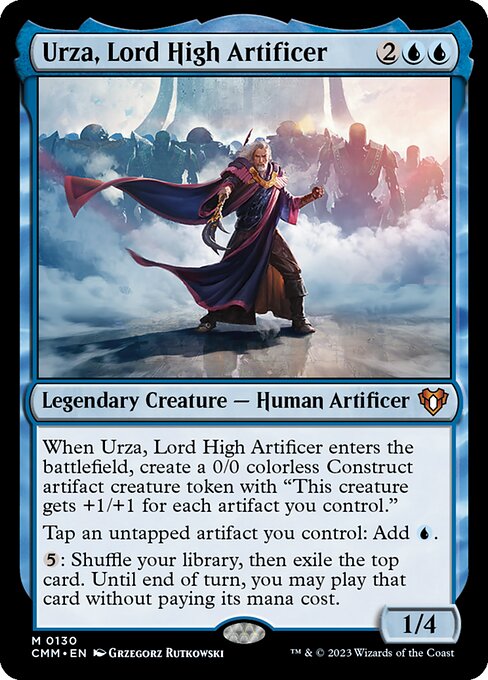
It’s rare that Wizards print these kinds of cards that require asking “Now, how does this interact with Urza” every single set. Urza’s a superb realization of the character from Magic’s lore, with references to Karn, Scion of Urza, Tolarian Academy, and Temporal Aperture.
Like the original Urza, he’s completely bonkers. I don’t expect him to catch a ban, but I do expect him to always bear watching. That, to me, should always be Urza’s legacy.
Least Dangerous Card
Folks, it’s Festive Funeral, a Lash of the Whip that’s sometimes a Disfigure. Miserable card that I always found myself running one copy of in Eldraine Limited, has never won me a game, yet may have saved my bacon a time or two. If it were a drink, it would be lemon Perrier. If it were a car, it would be a Camry. I hope to never think about it again in my life.
If the first few days are anything to go by, 2020 is going to be an odd year, both on the playmat and off. It makes me grateful to have a place with Hipsters of the Coast, which continues to spotlight thoughtful, useful content under the guidance of a fantastic team. Here’s to 2020, the “Year of Commander,” and to the Behemoths of Ikoria and the vanquished Eldrazi of Zendikar and to the hidden treasures of the Mystery Boosters. It’ll be another busy year, but there’s always time for a little Magic.
A lifelong resident of the Carolinas and a graduate of the University of North Carolina, Rob has played Magic since he picked a Darkling Stalker up off the soccer field at summer camp. He works for nonprofits as an educational strategies developer and, in his off-hours, enjoys writing fiction, playing games, and exploring new beers.

